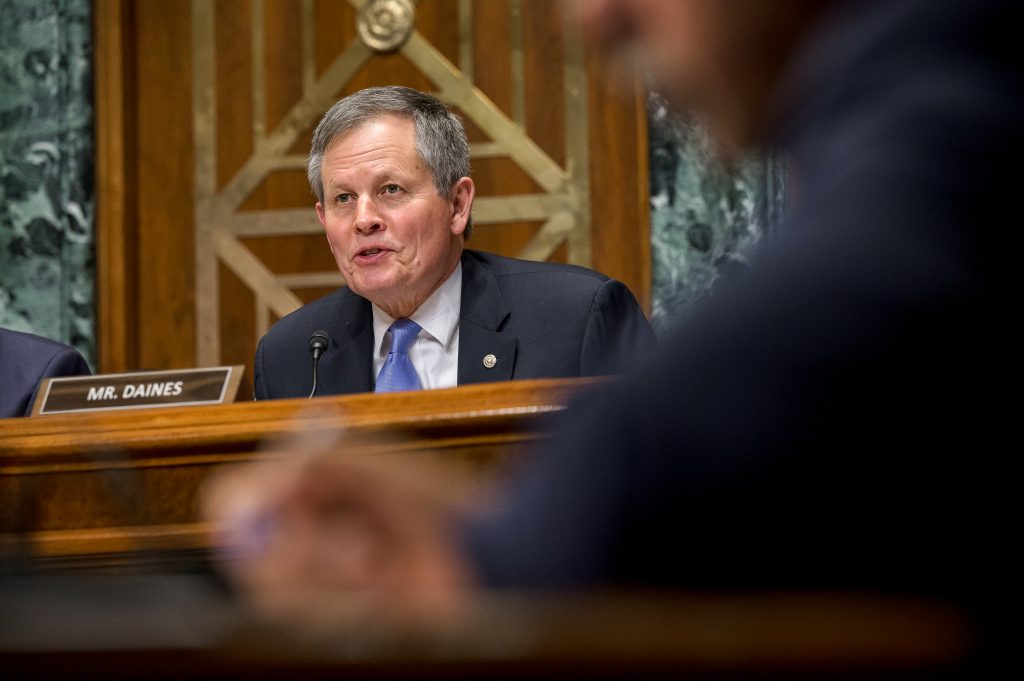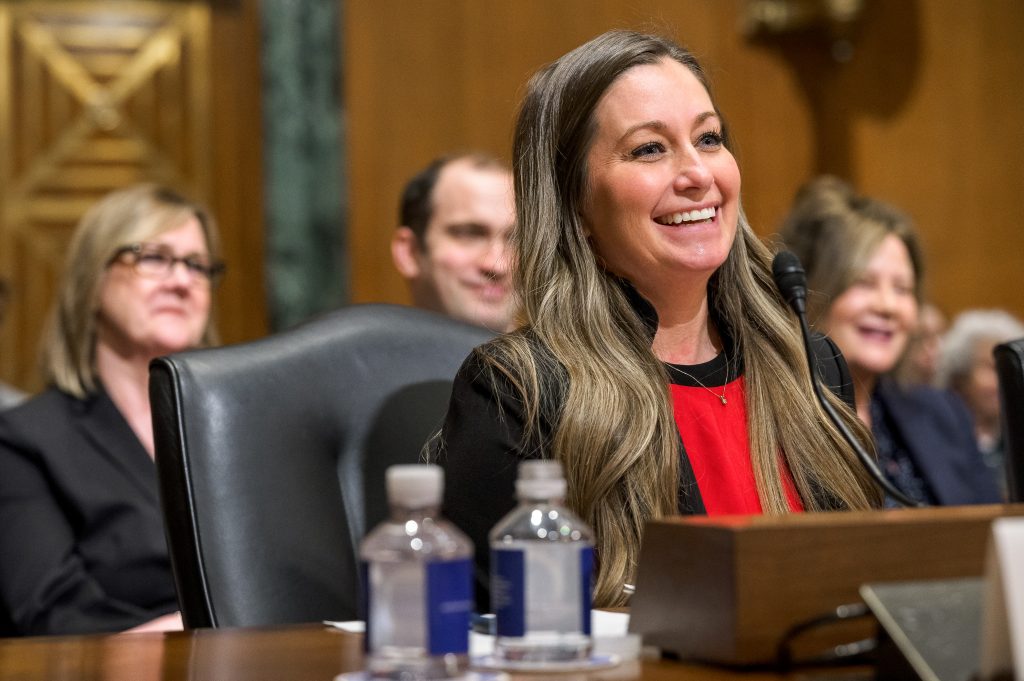Introduces Glasgow, Montana, witness to testify on rural health care needs
U.S. SENATE – U.S. Senator Steve Daines today co-chaired a Finance Subcommittee on Health Care hearing about the importance of improving health care access in rural Montana. Daines also invited Erin Aune, Vice President of Strategic Programs at Frances Mahon Deaconess Hospital (FMDH) in Glasgow, Montana, to be a witness. Glasgow is often referred to as the most isolated town in the lower 48 states.
In Daines’ opening statement he highlighted the struggles that many Montanans living in rural areas face when seeking health care, including having to travel several hours to receive care and the closure of rural hospitals.
Daines: Rural health is a key component of America’s health care. It’s a greatly important issue in my own state of Montana, as more than 720,000 Montanans live in designated rural areas, that’s about three-quarters of population of the entire state. Most every state in the nation, as the Chairman indicated is true in Maryland, have some semblance of a rural population. And in frontier states like Montana, we are all too familiar with the challenges that come with living where we do, including the challenge of accessing health care.
When we consider health care in a rural setting, one of the defining characteristics of access to care is distance, as well as logistics, which more specifically means transportation. The majority of people in rural America live great distances from their nearest health care provider. A trip to a hospital or a doctor’s office often requires traveling several hours, sometimes a full day one way. Not only is this highly inconvenient and straining, but also very dangerous and emergencies. Extreme weather, that’s where it could take a full day sometimes in states like Montana and unpredictable terrain only add to the challenges that our folks in rural areas face.
Other threats to access we see disproportionately affecting rural communities are the increasing number of hospital closures in service line erosions. As our witness, Dr. Holmes can attest, we’ve seen nearly 150 rural hospital closures in the past 13 years. While closures briefly stalled in 2021, this can largely be attributed to provided relief funds and other assistance to keep providers afloat during COVID-19. Now as we move beyond that pandemic, the number sadly is on the rise again.
I also hear too often about the erosion of service lines in rural America. In these areas, one of the first services to be eliminated, is obstetric and maternity care. GAO in fact just issued a report just last year was found access to these services has been in steady decline, and more than half of rural counties do not have these services available at all. In fact, we just heard the story about a fellow Montanan, a woman who traveled from her home several hours away from Billings weeks leading up to her due date. She moved into a hotel so that when she went into labor so she would be able to get to the hospital for her delivery. Preparing for labor, delivery and newborns is difficult enough, no expectant mom should feel the need to go to these drastic lengths to receive routine prenatal and delivery care.
This is just one example of how service line erosion impacts rural residents, but it’s illustrative of the challenges we need to help address, and this hearing will help us in that regard today. We must find sustainable ways to keep health care accessible in our rural communities. To that end, I’m looking forward to discussion today from our colleagues, the witnesses, hearing their perspectives.
The last time by the way, the Finance Committee had a robust conversation about rural health was five years ago in 2018. I’m glad we’re revisiting the conversation today. Again, I want to thank the Chairman for his leadership here. We’re doing it post-pandemic to examine the difficulties in progress over the past five years. We’re proud of Senator Grassley’s leadership. In January of this year, the first new Medicare rural provider designation went into effect since the critical access hospital designation was created all the way back in 1997. We’re proud of the Montana leadership which led this designation.
I think about my Boy’s State speaker in Montana was a guy named Max Baucus. He spearheaded this. And now it’s great to see Senator Grassley and others working to implement new and creative ways to serve the changing needs of our rural hospitals today. So, thanks to the witnesses who if you’re from rural parts of our country, it wasn’t easy to get here. We appreciate your expertise in this subject. Mr. Chairman turn it back to you.
Daines asked Ms. Aune about the rotating provider model that she has implemented at her clinic in Glasgow and how it has helped address workforce shortages.
Senator Daines: Ms. Aune it’s good to have somebody officially from the middle of nowhere. That was, by the way, determined by the Washington Post. They had a criteria—there had to be 1,000 residents or more, furthest away from the metro area and the top three in the nation stack ranked were all in northeast Montana and number four went to Nevada, some small place so you are literally from the middle of nowhere and have the gold medal.
So, we’re glad you’re here. I think you bring it a very unique perspective. And I know your colleagues here who share similar testimony have similar challenges. In your testimony, you mentioned some of the notable characteristics of providing health care in these very rural and remote areas of the country. And I know when people are sitting in gridlock traffic, they’re yearning to move to the middle of nowhere sometimes, and that’s why we’re seeing a lot of growth in a lot of parts of Montana. But we’re seeing health professional workforce shortages across the board. Ms. Rich spoke about the acute challenges of the numbers you are facing right now in your facility. But these shortages have outsized effects. When you’re talking about rural communities where populations, the pool that you can hire from are limited, small to begin with.
Could you speak a bit more to the rotating provider model that you implemented at your clinic, as well as your recent partnership with Intermountain to facilitate the behavioral health responses in the emergency room?
Ms. Aune: Yeah, so our rotating providers, that was an organization that we found, luckily found, because we were having, we’d lost our orthopedic surgeon and if we don’t have that patients have to drive 300 miles you know, to have a hip or knee replaced so we felt that was a critical need. So, it is 24/7 coverage. We have three full-time providers that rotate in. They live elsewhere in the United States, and they fly in for their rotation. They do attend a 12 day rotation and they’re on call 24/7. They run a clinic and then they do surgery. And that model works so well that we achieved that for general surgery and then OBGYN as well. And then we just, unfortunately, our radiologist is moving so we are possibly looking for that model for radiology.


